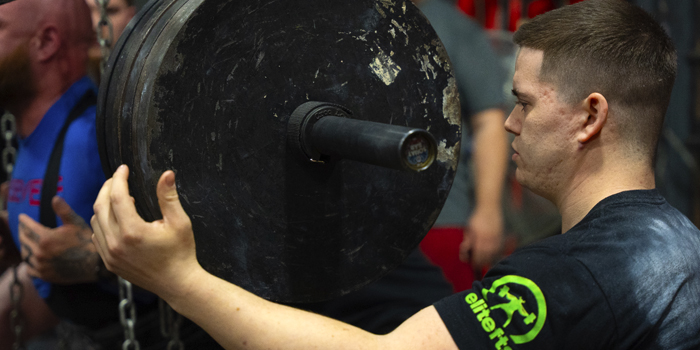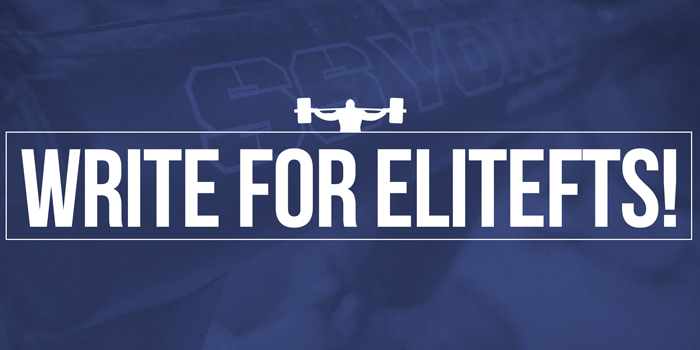
It has been said that what you do outside the gym is just as important as what you do during your workouts, if not more. I tend to agree with this sentiment. Basic exercise science will tell you that when the fatigue of a stimulus (i.e., training) outpaces one’s ability to recover, adaptation (i.e., getting stronger) will not occur. But what really is recovery?
The “use my code for 10% off” Instagram fitness influencer population might lead you to believe that you need a $300 massage gun, a $1200 ice barrel, or a $65 tub of amino acid powder in order to recover optimally. Do not get me wrong; there is nothing inherently wrong with being affiliated with a brand that you believe in. There are certain recovery practices, supplements, and tools on the market that may be truly beneficial for athletes. That said, those benefits are pretty minute in the grand scheme of performance and recovery. The truth is, 99 percent of “recovery” is just doing non-exciting stuff that every human, athlete or not, should be doing.
As a self-proclaimed hybrid athlete– a cool term to describe someone who is outstandingly average at multiple sports–recovery is extremely important in enabling all of my running and lifting.
In no particular order, here is my “Holy Trinity” of recovery.
1. Sleep
Sleep is massively important to human performance, athletic or otherwise. Sleep is how we rest our bodies and minds. The American Academy of Sleep Medicine (aka Big Sleep) recommends that adults get 7-9 hours per night. I tend to average somewhere between seven and eight, depending on the week. I go to bed on weekdays between 9 and 9:30 pm and wake up at 5 am. On the weekends, I go to bed between 10–11 pm and wake up between 6 and 7 am.
I hate to break it to you, but one of the best ways to get more sleep is to go to bed earlier. Here are a few actionable steps to help with that:
- Set an alarm or reminder on your phone for 30 minutes before you want to be asleep; cut off your screen time for the evening right then and there. I leave my phone charging in the kitchen overnight and rely on my watch alarm to wake me up.
- Eat your last big meal at least two hours before bedtime, when possible.
- Wind down in the evening by reading something that does not stress you out (e.g., a novel instead of the news or your work email).
- Stop drinking so much damn caffeine in the afternoons.
2. Nutrition
My philosophy on food, as it relates to athletic performance, is simple: eat enough carbohydrates and fats to support the energy expenditure of the training, eat enough protein to build or maintain muscle mass, and eat a wide variety of micronutrients to stay healthy. My best recommendation for someone who has no idea where to start with diet and nutrition would be to read Stan Efferding’s Vertical Diet. Here’s what my diet looks like:
Breakfast #1 (Pre-Training)
This meal varies depending on what the day’s scheduled training is. If I am going for a run, this meal usually includes peanut butter and honey toast with banana slices. Recently, before heavy strength training sessions, I have been eating Cinnamon Toast Crunch with lactose-free skim milk—the PRs keep coming. If I am lifting, I will have black coffee (my favorite pre-workout) shortly after this meal; If I am running, the coffee comes after training.
Breakfast #2 (Post-Training)
My post-training breakfast tends to be a heartier meal, such as a grit bowl with cheese and eggs or a breakfast sandwich on a bagel or English muffin. If I ran that morning and didn’t drink coffee earlier, I would do so now.
Lunch
Typically, lunch will be rice or pasta with grilled chicken or ground beef and vegetables. I do a lot of spinach, peppers, and onions. I like to add shredded cheese and try different condiments with these bowls to spice it up. If I am lazy or unprepared, this meal may turn into something simpler, like canned chili over rice or a frozen pizza.
Snacks
I have a couple of snacks throughout the day. I try to have at least one of these snacks, be something high in protein like cottage cheese, greek yogurt, or a protein shake. Fruit, pretzels with hummus, and crackers are other common snacks.
Dinner
Generally similar to lunch, this is sometimes a more high-effort meal like a new pasta or rice bowl recipe. The vegetables with this meal also take a little more prep; broccoli, carrots, zucchini/squash, and asparagus are common ones. I will usually have fish (mainly salmon, but sometimes tilapia or trout) at least one dinner per week. Shamelessly, I will do boxed macaroni and cheese as my dinner carb source about once per week.
Dessert
I do not have much of a sweet tooth, but I do enjoy some ice cream or a cookie every now and then.
Hydration
I aim to drink half of my body weight in fluid ounces of water each day. For me, that is about 90 fluid ounces. I start each day with a 32oz Nalgene bottle with creatine monohydrate and Mio, LMNT, or LiquidIV, which is generally downed by the end of my training session. I will drink another bottle or two throughout the day, along with a couple of Lacroix sparkling waters, and that gets me to where I need to be. However, I also drink some orange juice with my second breakfast and milk once or twice a day.
Alcohol
I have made a focused effort to limit alcohol over the past couple of years; it definitely has an effect on sleep and training quality. I try to only drink on one day of the week, generally Friday or Saturday. I do, at times, have a glass of red wine with dinner or a single beer at trivia on weeknights. As with most things, I am a bit less stringent when I do not have a race or competition in the near future.
Weekends/Cheat Meals
My weekends are definitely not as regimented as what I have described above, especially if I am traveling. It is important to me that I do my best to maintain a healthy and enjoyable relationship with food. I go to restaurants and eat burgers, fries, pizza, and other “unhealthy” things. I do not feel bad about it as long as I am not doing that every day. My weekends generally consist of fewer meals that are more calorie-dense. I still try to prioritize protein, even when eating out. You will never catch me ordering a meal in a restaurant that does not have meat or eggs in it.
Fasting
Lately, I have been fasting on Sunday mornings prior to going to church. I will also generally avoid caffeine on Sundays. This is a personal choice that I benefit from mentally and spiritually; I honestly do not think it affects my performance in training for better or worse. I do not train on Sundays except for the occasional recovery jog. There are a lot of spicy opinions out there on fasting; I do not really have one. It works great for many people and may be worth researching and experimenting with.
3. Conditioning
Louie Simmons popularized the term “general physical preparedness,” or GPP. GPP is the base of physical capability that an athlete must possess to effectively express and execute their sport-specific abilities in their competition arena. GPP, in my opinion, encompasses both musculoskeletal and cardiorespiratory work capacity. Cardiorespiratory training is particularly important to recovery, both short and long-term. In the short term, having a stronger aerobic base will allow you to recover quickly between sets and improve the quality of your training. In the long run, increased cardiorespiratory fitness improves blood pressure, resting heart rate, sleep quality, immune system strength, and mental health. The Department of Health and Human Services recommends adults do 150 minutes of moderate-intensity aerobic exercise, 75 minutes of vigorous aerobic exercise, or a blend of the two per week.
Without getting into the science of ventilatory or aerobic thresholds, think of it like this:
You can do five 30-minute bouts of low-intensity exercise (such as walking or riding a stationary bike at a conversational pace) OR
Five 15-minute bouts of high-intensity exercise (such as running or sled/prowler work) OR
Any combination of those two (such as three 30-minute walks and two 15-minute prowler sessions) per week–I would consider this to be the best method.
I firmly believe that any strength athlete who is currently ignoring conditioning would benefit greatly from a regimen like this.
I am currently in my running season, so getting my aerobic work is not an issue for me at this time; during my powerlifting season, my conditioning work looked like this:
Week A
- Three easy runs, aiming for 90-120 total minutes
- One hard, non-running workout such as assault bike, rower, or prowler/sled sprints
Week B
- Two easy runs
- One hard run - either an interval workout or a tempo run
- One easy, non-running workout such as a long weight-vest walk or hiking at a moderate pace
Summary
In conclusion, if you have found that your performance is faltering due to a perceived shortcoming in recovery, take a step back and analyze your sleep, diet, conditioning, and overall training plan. It is also important to factor in the stressors of life outside the gym–if your work or home life is a constant stressor, it’s essential to factor that in when determining what kind of training volume or load you can sustain. If all of those elements are dialed in, you should be seeing progress.
As a disclaimer, I left out blood work and hormone optimization not because they are not important but because A) I am not a doctor and B) hormone levels are multifactorial and will fluctuate based on the three factors I covered: sleep, diet, and nutrition. I get labs done on an annual basis before my yearly check-up, and I would recommend everyone do the same. Marek is a great option.
Enjoy your road of recovery.
References
- EFFERDING, STAN. Vertical Diet. TUTTLE PUBLISHING, 2021.
- Olson, Richard D, et al. “Physical Activity Guidelines for Americans 2nd Edition Presentation.” Health.Gov, US Department of Health and Human Services, 2018, health.gov/sites/default/files/2019-09/Physical_Activity_Guidelines_2nd_edition_Presentation.pdf.
- Richardson, Hunter. “Nutrition & Diet Shenanigans Pt 1.” Squatter’s Rites, 9 Aug. 2023, https://squattersrites.substack.com/p/nutrition-and-diet-shenanigans-pt. Accessed 2023.
- Richardson, Hunter. “Nutrition & Diet Shenanigans Pt 2.” Squatter’s Rites, 16 Aug. 2023, https://squattersrites.substack.com/p/nutrition-and-diet-shenanigans-pt-b5d. Accessed 2023.
- Richardson, Hunter. “Stop Ignoring Conditioning.” Squatter’s Rites, 7 June 2023, https://squattersrites.substack.com/p/stop-ignoring-conditioning. Accessed 2023.
- “Sleep and Performance - American Thoracic Society.” Thoracic.Org, American Thoracic Society, 2018, www.thoracic.org/patients/patient-resources/resources/sleep-and-performance.pdf.
Hunter Richardson serves as an infantry officer in the United States Army. He trains in a variety of ways and loves his garage gym dearly. Hunter volunteers as an assistant strength coach for local middle and high school athletes. You can find Hunter's training on Instagram @squatters_rites.










